How Long Has The Universe Been Accelerating?

If we came along too soon, would we ever have discovered dark energy?
“Even if I stumble on to the absolute truth of any aspect of the universe, I will not realise my luck and instead will spend my life trying to find flaws in this understanding — such is the role of a scientist.” –Brian Schmidt
Perhaps the biggest discovery about the Universe in the last generation came at the very end of the 20th century, when we uncovered one of the most disconcerting cosmic truths: the distant galaxies, as time goes on, aren’t just receding from us, they’re speeding up as they move away from us. The discovery of the accelerated expansion of the Universe, by the Supernova Cosmology Project and the High-z Supernova Search Team, was awarded the 2011 Nobel Prize in Physics, but is one of the most bizarre and unexplained phenomena in the Universe. The thing is, the Universe wasn’t alwaysaccelerating away from us like this. For billions of years, the expansion was slowing down, and to someone alive ten billion years ago, it might have looked like it could recollapse. Let’s take a look at what happened, and how we know.
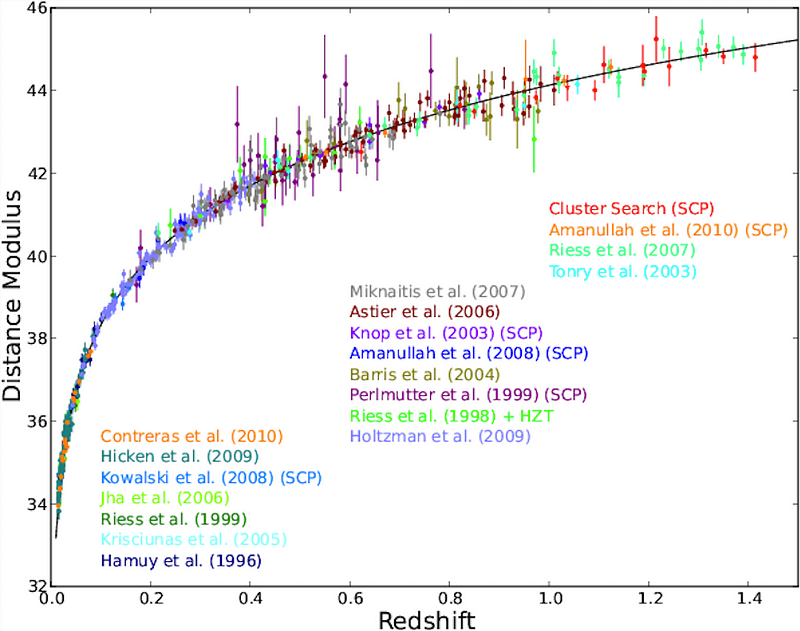
In the 1920s, four pieces of evidence — three observational and one theoretical — combined to teach us that the Universe was expanding. They were:
- The discovery that the spiral nebulae in the night sky were actually galaxies, or “island Universes,” containing billions of stars of their own and located far outside the extent of the Milky Way.
- The measurement of the redshifts and blueshifts of these galaxies by Vesto Slipher, determining how rapidly these galaxies appeared to be moving either away from us (for redshifts) or towards us (for blueshifts), with the vast majority moving away from us.
- The measurements of the distances to each of these galaxies by Edwin Hubble and his assistant, Milton Humason. The observations, combined with Sliphers, showed a clear relationship: the more distant a galaxy was, on average, the faster it appeared to be moving away from us.
- And finally, the huge theoretical leap came courtesy of Einstein’s General Relativity: the realization that a Universe filled with galaxies of approximately equal densities in all directions would be unstable unless it was either expanding or contracting.
This led to a picture of the Universe as early as 1929 where the Universe was hotter, denser, and expanding more rapidly in the past, and was getting cooler, less dense, and where the expansion rate was slowing down as time went on.
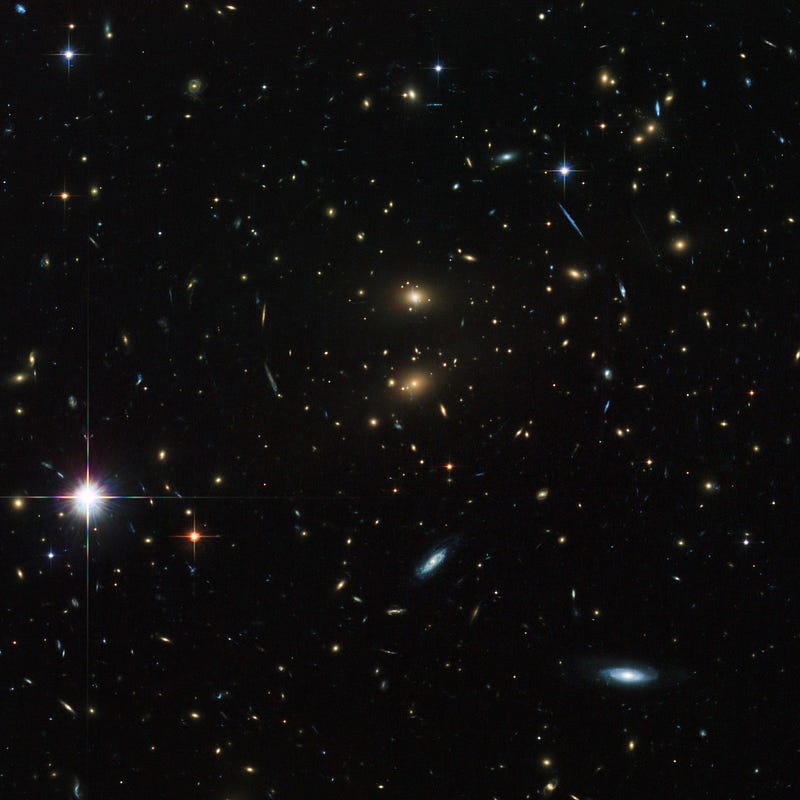
This makes sense, if you think about it in the context of the Big Bang. Imagine the Big Bang as the starting gun of a great cosmic race, a race between the initial expansion on one hand, which starts off incredibly rapid, and between gravitation on the other hand, which works to pull everything back together. You can easily imagine three different possibilities, each of which results in a different fate for the Universe:
- A Big Crunch. Perhaps the initial expansion rate is fast, but over time, the force that gravity exerts turns out to be stronger. The expansion rate would slow down and then cease. The Universe would reach a maximum size and then begin contracting. And finally, it would recollapse, imploding in a state that was essentially the Big Bang in reverse.
- A Big Freeze. This is the opposite scenario: where the expansion starts off fast, and gravity works to slow it down, but is insufficient. The expansion continues at a rapid rate for all eternity, with gravity working to slow it down the whole time, but never succeeding in bringing it to a stop. This scenario is known as the heat death of the Universe, or the Big Freeze.
- A Critical Universe. There’s also the possibility that you’re right on the edge of the two, where the expansion rate and gravity balance each other perfectly, and the expansion rate slows over time and asymptotes towards zero. If there were just one more or one fewer particle in the Universe, you’d get either the first or second scenario above instead, but that particle isn’t there. This “critical Universe” scenario results in the slowest possible heat death imaginable.
For billions of years, it looked like the critical case was going to win. You see, when you live in the Universe and look out at the different galaxies, you can measure not only what the expansion rate is today, but by looking at the more distant galaxies, you can measure what the expansion rate used to be earlier in the Universe’s history.
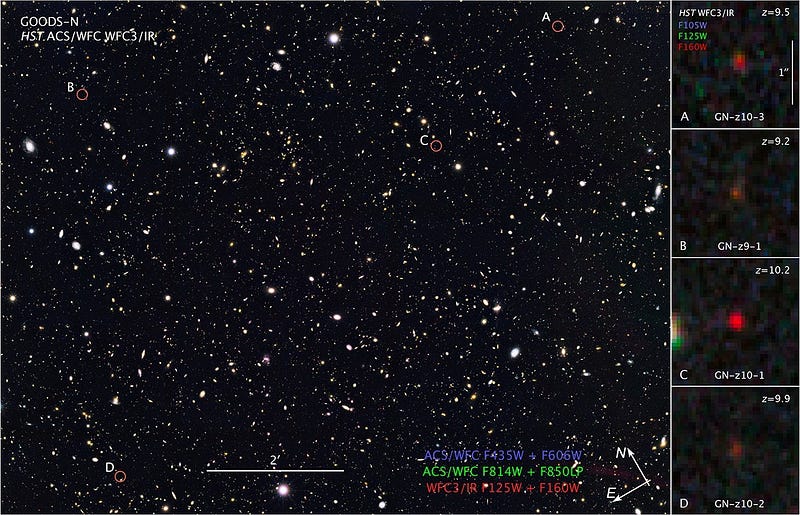
So for billions of years — about seven billion, to be more precise — it looked like we lived in a critical Universe. The expansion began dominated by radiation (photons and neutrinos), and then it cooled enough that matter (both normal and dark matter, combined) became dominant. As the Universe continued to expand, the matter density dropped and dropped, since matter density is just mass (which is a constant) over volume (which is increasing).
But at some point, the matter density dropped to such a low value that another, more subtle contribution to the Universe’s energy density began to show up: dark energy. At around seven billion years of age, dark energy’s value reached a few percent that of the total energy density, and by time the Universe was 7.8 billion years old, the dark energy density reached a very important value: 33% of the total energy density in the Universe. That’s an important value, because that’s the amount of dark energy necessary — in a Universe otherwise filled with matter — to cause the expansion rate to begin accelerating!
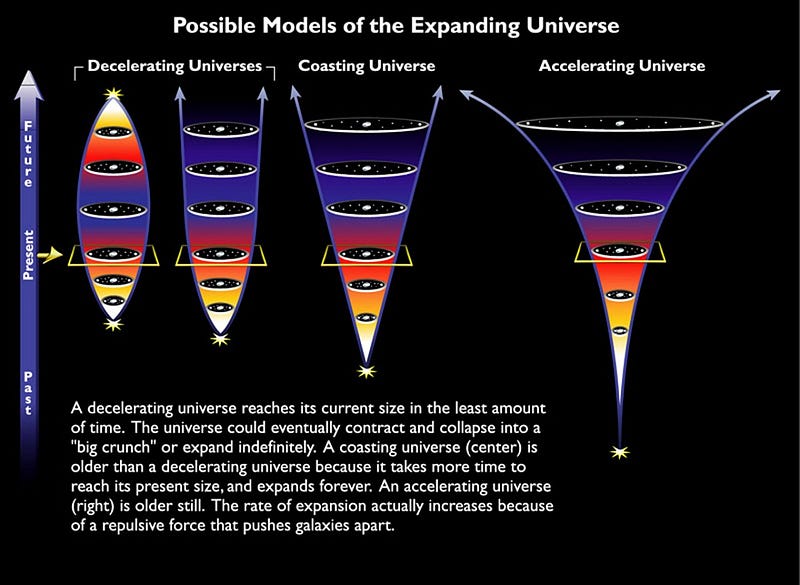
Since that time, some 6 billion years ago, the matter density has continued to drop, while dark energy has remained a constant. At present, dark energy makes up some 68% of the total energy in the Universe, with matter having dropped to be about 32% total (27% dark matter and 5% normal matter). As time goes on in the future, the matter density will continue to drop, while the dark energy density will remain constant, meaning dark energy becomes more and more dominant.
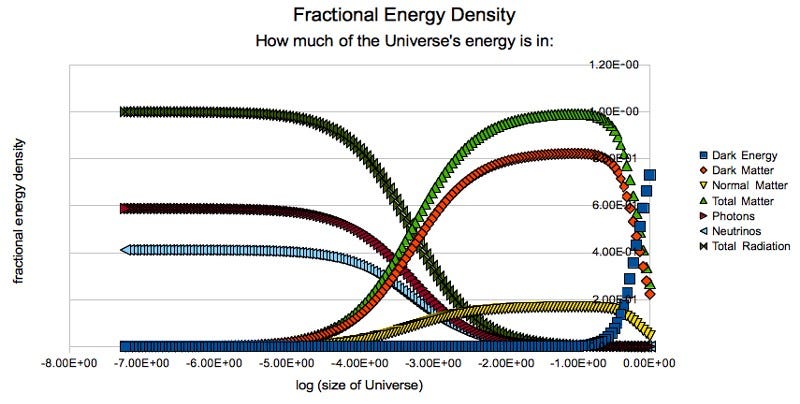
For individual galaxies, that means that a galaxy that began receding from us quickly at the moment of the Big Bang would have seen its apparent recession speed slow down from our perspective for the first 7.8 billion years. At that moment, the recession speed would have stopped slowing, and would have remained constant for a brief while. And ever since then, it would have sped up, receding ever faster as the space between ourselves and the distant galaxies expands at an ever increasing rate. At some point — and frighteningly, this is already true for 97% of the galaxies in our visible Universe — each and every galaxy beyond our local group will appear to recede at a speed greater than the speed of light, making it forever unreachable by us due to the limitations of physics.
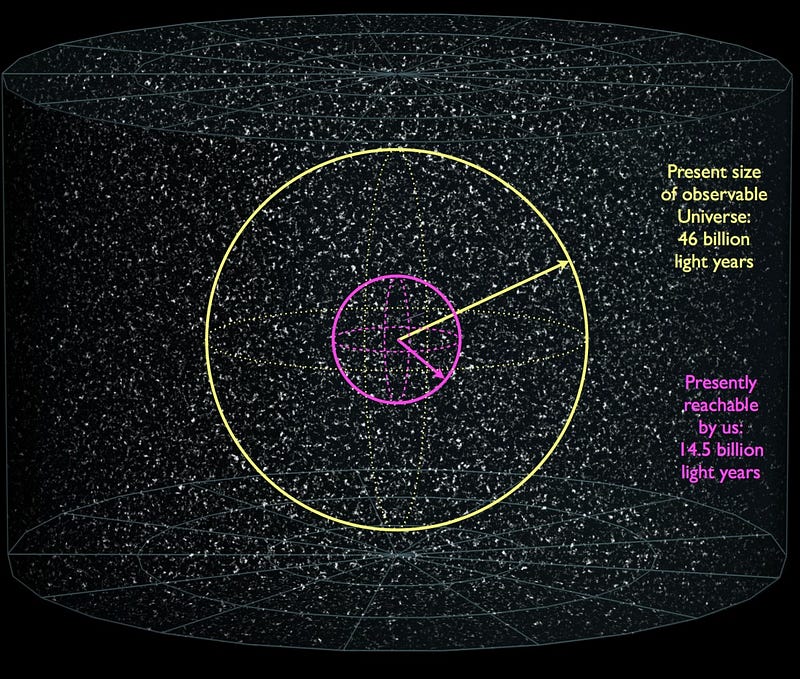
The Universe has always, as far as we can tell, had the amount of dark energy it has today inherent to space itself. But it took 7.8 billion years, or the entire Universe’s history up until about 1.5 billion years before our Solar System formed, for the matter density to drop to such a point that dark energy came to dominate the Universe’s expansion. Ever since then, all the galaxies beyond our local group have been accelerating away from us, and will continue to do so until the very last one is gone. The Universe has been accelerating for the past six billion years, and if we had come along sooner than that, we might never have considered an option beyond the three possibilities our intuition would have led us to. Instead, we get to perceive and draw conclusions about the Universe exactly as it is, and that’s perhaps the greatest reward of all.
This post first appeared at Forbes. Leave your comments on our forum, check out our first book: Beyond The Galaxy, and support our Patreon campaign!





